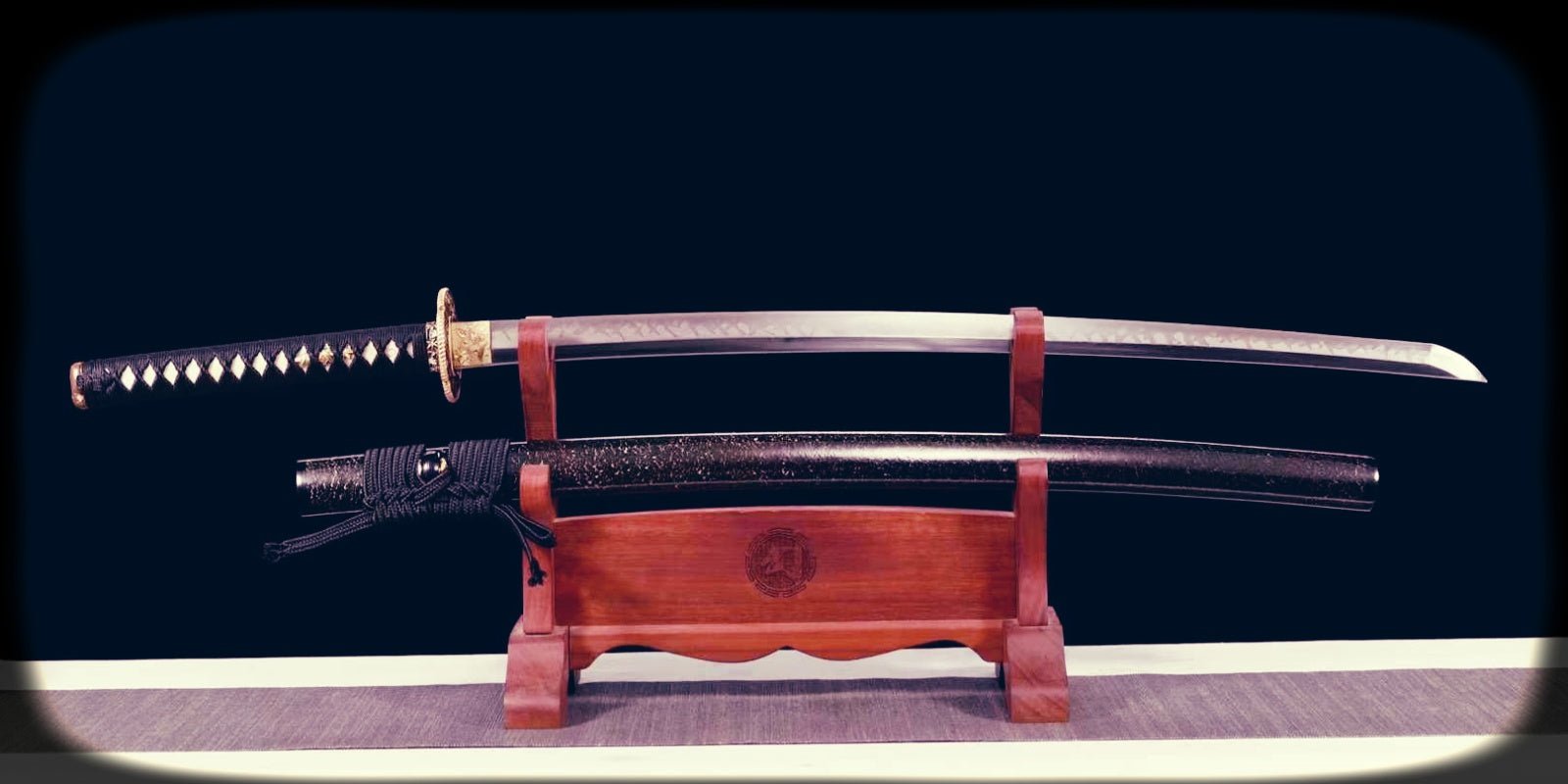Introduction to Sageo: The Art and Function of Katana Cord Tying
The sageo is a meticulously crafted cord, traditionally made of silk, cotton, or synthetic material, that threads through the kurikata (a small knob) on the katana’s scabbard, or saya. Its role is both functional and symbolic, deeply rooted in samurai culture. Historically, the sageo secured the sword to the samurai’s obi (belt), ensuring both accessibility and stability during movement. Beyond its practical use, the sageo embodied discipline, aesthetics, and social status.
Mastering sageo tying techniques became an art form, blending precision with creativity. The different tying styles often communicated a swordsman’s rank, purpose, or emotional state, while maintaining respect toward the katana’s revered symbolism.
Historical Significance of Sageo Styles in Samurai Culture
The sageo, a cord affixed to the saya of a katana, held multifaceted importance in samurai culture, extending beyond mere practicality. Its tying style often reflected the owner's social status, personality, or dedication to their martial disciplines. During the Edo period, when the samurai class emphasized aesthetics and etiquette, specific styles of sageo knots evolved to signify rank and adherence to bushido—the code of honor.
Ceremonial ties symbolized respect in formal settings, while utilitarian styles suited practicality in combat scenarios. Certain knots were also used to secure the katana during travel, reflecting a warrior’s readiness. Each knot carried implicit meaning, intertwining cultural, functional, and personal dimensions in its design.
Essential Tools and Materials for Sageo Tying
To successfully tie a Katana sageo, having the right tools and materials is crucial. It ensures precision and helps maintain the aesthetic integrity of the knot. Below are the essential items required:
Tools
- Soft Cloth or Pad: Protects the Katana's scabbard from scratches during the tying process.
- Fine Tweezers: Help adjust intricate knots with accuracy.
- Small Wooden Rod or Stick: Provides support when tightening folds or loops.
Materials
- Sageo Cord: Typically made of silk, cotton, or synthetic fiber, available in various styles and colors.
- Katana Saya (Scabbard): The sageo is tied directly onto the saya’s kurikata fitting.
- Reference Guide or Diagram: A visual representation of knot styles can be helpful for beginners.
Careful attention to the tools and materials ensures a practical and visually appealing result.
Step-by-Step Guide to Basic Sageo Tying Techniques
Tying the sageo, the cord attached to a katana’s saya, requires a practiced approach to ensure both utility and aesthetic harmony. Follow these steps to master basic techniques:
- Prepare the Materials Lay the katana horizontally with the tsuka facing left. Ensure the sageo is untangled and properly aligned for even length.
- Anchor the Sageo Thread the sageo through the kurikata, the small loop on the saya. Center the cord to ensure both sides are equal.
- Create the Foundation Knot Tie a basic overhand knot close to the kurikata. This stabilizes the sageo for further tying.
- Form the Decorative Loops Cross the ends over the saya, alternating the loops symmetrically. Adjust tightness for appearance and practicality.
- Secure the Finish Tie the final knot firmly to prevent slippage while maintaining aesthetic detail. Double-check balance and alignment.
Intricate Sageo Styles and Their Symbolic Meanings
The art of tying a sageo is rich with cultural significance, blending form with purpose. Certain styles, like the uchi gaeshi musubi, feature complex loops symbolizing harmony and responsibility, reflecting a samurai’s commitment to duty. The kaeshi musubi, often symmetrical, signifies discipline and balance, representing the martial ethos.
Some patterns, such as the fukuro musubi, were historically tied to convey readiness for combat, symbolizing alertness and vigilance. Intriguingly, the tightly-knotted riken musubi serves both aesthetic and functional purposes, embodying resilience and focus. Each style reflects aspects of bushido, the samurai code, tying tradition with personal identity. Through these intricate patterns, a samurai's intentions and values were often subtly communicated.
Traditional Sageo Styles Passed Down Through Generations
The art of tying the sageo, the cord adorning a katana’s sheath, reflects traditions honed over centuries and carries significant cultural weight. Historical styles of sageo tying blend purposeful functionality with intricate aesthetics, offering glimpses into the customs and philosophies of feudal Japan.
Styles vary widely, with some of the most renowned being:
- Shigeuchi (Tight-Knot Style): Used by warriors for securing their swords firmly during travel or combat.
- Eri Himo (Collar Cord Style): A simpler tie suited for formal occasions and ritual display.
- Kurunawa (Coiled Rope Style): Valued for its decorative complexity and symbolic elegance.
These techniques emphasize precision and discipline, reflecting the samurai’s values of honor and mindfulness.
Modern Interpretations and Adaptations of Sageo Tying
In modern times, the art of tying a sageo extends beyond traditional practices, incorporating creative and personal interpretations. While the functional purpose of securing the katana remains relevant, practitioners often explore unconventional styles to express individuality.
- Artistic Variations: Some martial artists use intricate knots and patterns, blending influences from decorative macramé or modern ropework.
- Cultural Fusion: Contemporary adaptations may incorporate designs from non-Japanese cultures, symbolizing global influences.
- Minimalist Trends: Practitioners seeking simplicity opt for clean, understated knots, reflecting modern aesthetic preferences.
Collectors and enthusiasts tie sageo differently based on display preferences. Moreover, some adapt tying methods to integrate with modern tools like synthetic sageo cords, balancing tradition and innovation seamlessly.
Hidden Messages: Cultural Insights into Sageo Design Choices
Sageo design serves as more than just functional utility; it is laden with symbolic meaning in Japanese culture. The choice of color, patterns, and knot styles reflects the samurai’s values, philosophy, and social status. Subtle variations, such as bright hues, could symbolize vitality or youth, while darker tones might signify wisdom or maturity.
Key Cultural Elements in Sageo Design:
- Colors: Red may signify courage, white purity, and blue serenity, each carrying specific virtues.
- Patterns: Geometric designs often symbolize harmony, while floral motifs evoke life and beauty.
- Knot Types: Some knots embody tradition, while others signify practicality, individuality, or martial readiness.
These symbolic aspects integrate seamlessly into samurai identity, blending aesthetics with historical significance.
Practical Applications of Sageo in Martial Arts and Display
The sageo, while often considered decorative, serves essential practical purposes in martial arts and traditional Japanese weaponry. Among practitioners of iaido and kenjutsu, the sageo is utilized to secure the scabbard (saya) to the obi (belt), offering stability during kata movements. This ensures precise handling of the katana without unnecessary shifting.
In displays or ceremonies, the positioning of the sageo reflects respect and attention to detail. Variations in tying styles, such as the kai no kuchi or cho musubi, indicate its symbolic role in personal expression or storytelling. Collectors and artisans use the sageo to enhance a katana’s aesthetic, complementing the sword’s craftsmanship.
Tips and Tricks for Perfecting Your Sageo Technique
- Start with Proper Tension: Ensure balanced tension while tying the sageo to maintain secure knots and an aesthetically pleasing appearance.
- Practice Finger Placement: Carefully position fingers when folding or wrapping the sageo to achieve precision without tangling.
- Use Consistent Loops: Symmetry in loops enhances visual appeal and prevents functional issues during sword draw or storage.
- Focus on Spacing: Maintain uniform spacing to create straight, clean lines in the sageo arrangement.
- Adjust for Practical Use: Consider the intended purpose of the katana, such as ceremonial display or combat readiness, to adapt technique efficiently.
- Refine Over Time: Dedicate time to perfecting the craft and learning from historical references or expert opinions.

